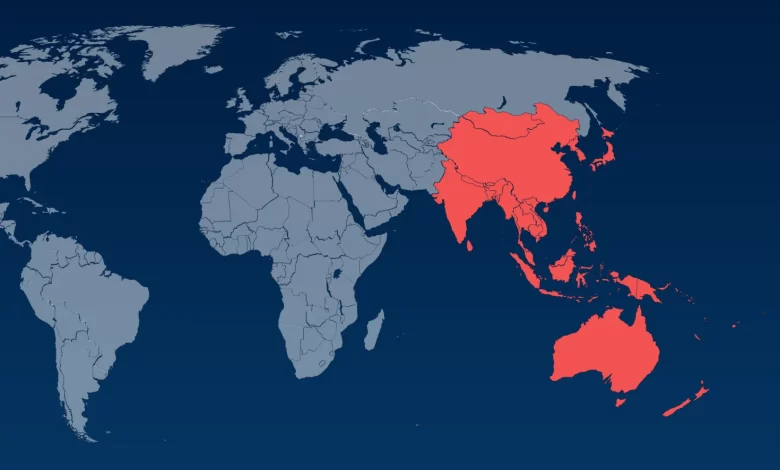Identity Theft, Document Forgeries Among Top Fraud Threats in APAC: Global Average Loss from Fraud Reaches $7M Annually
A joint study by Docusign and Entrust reveals that identity theft, document forgeries, and account creation fraud are rising across APAC, costing global businesses an average of USD 7 million annually.

Docusign,together with leading global provider of identity-centric security solutions, Entrust, have released new research uncovering the rising financial and reputational toll of identity fraud on businesses worldwide. Findings point to a growing challenge: as fraud becomes more sophisticated, organizations are under increasing pressure to secure digital interactions without compromising user experience.
According to The Future of Global Identity Verification, 69% of organizations globally have experienced an increase in identity fraud attempts over the past two years. The average annual cost of identity fraud has now reached USD 7 million (SGD 9.3 million) per business, factoring in chargebacks, remediation costs, and brand damage.
In the Asia Pacific (APAC) region, identity theft, account creation fraud, and digital document forgeries emerged as the top three fraud threats. These methods often target customer onboarding flows and document verification processes—points in the user journey where businesses face pressure to prevent fraud without adding friction. Reflecting this tension, 80% of APAC organizations said that fraud prevention and customer experience are competing priorities, the highest among all regions surveyed.
“As identity fraud escalates, enterprises are increasingly pressured to strike the right balance between security and seamless user experiences,” said Kartik Krishnamurthy, Vice-President, Asia at Docusign. “This global study reinforces a critical truth: stronger security doesn’t have to come at the cost of customer experience—in fact, it enhances it.”
Krishnamurthy added, “By implementing intelligent, low-friction security measures that are part of the Docusign ID Verification portfolio, businesses can create the right balance between building trust, protecting customers, and driving long-term engagement in an increasingly digital world.”
Financial Services and Retail See Heightened Risk and ROI
Certain industries are feeling the impact of identity fraud more acutely. In the banking and finance sector, where transaction volumes and regulatory obligations are high, organizations reported the highest costs of direct identity fraud. According to the study, 51% of financial services respondents globally reported annual losses exceeding USD 1 million (SGD 1.3 million) due to fraud. These threats often originate during account creation or payment authorization stages, where fraudsters exploit gaps in identity verification (IDV).
In retail and e-commerce, the challenge is in balancing speed, convenience, and security in high-volume digital transactions. Fraud is most commonly detected during checkout and refund or chargeback stages, often after the transaction is complete. These trends underscore the importance of detecting fraud earlier in the customer journey—an area where identity verification solutions have shown measurable impact. With digital trust influencing brand loyalty and conversion rates, modern IDV tools are increasingly relevant for retailers managing real-time customer expectations.
As scammers leverage AI-driven fraud techniques, attacks are becoming more sophisticated and frequent. Fraud is significantly more common when only basic authentication methods are used — 51% of organizations reported fraud attempts involving usernames and passwords, compared to only 21% against facial biometric liveness detection. The contrast underscores the growing importance of adopting more intelligent, adaptive verification tools, especially across these high-risk sectors.
IDV Investment Linked to Cost Savings, Competitive Advantage, and Brand Gains
As identity fraud grows more complex, organizations are increasing their investment in security tools that protect both their bottom line and their customers.
While 58% of respondents expressed concern that stricter fraud controls could negatively affect the user experience, a significant majority of organizations (70%) said that technology is the most effective way to mitigate identity fraud, and nearly three quarters (74%) indicated plans to increase their investment in IDV.
“A misconception about fraud prevention is that stronger security comes at the cost of user experience,” said Tony Ball, President of Payments & Identity at Entrust. “Modern IDV solutions and adaptive authentication enable them both. End-users can verify their identity with a quick biometric selfie, while fraud checks such as device recognition, AI-powered deepfake detection run in the background. Adaptive authentication completes the identity lifecycle security and further enhances security by adjusting requirements based on risk signals, ensuring protection without unnecessary friction.”
The study also found that organizations investing heavily in modern IDV tools reported average savings of USD 8 million (SGD 10.7 million) annually. Compared to those investing at an average level, these organizations were:
- 2.2x more likely to report cost savings
- 1.7x more likely to significantly reduce identity fraud
- 2.7x more likely to believe they outperform their peers in fraud prevention
- 1.6x more likely to report a positive impact on brand trust
As digital threats continue to evolve, organizations are responding with increased investment in identity verification and authentication technologies. The report indicates that many are prioritizing solutions that address both security and user experience concerns. As new technologies emerge, modern IDV tools are being integrated into broader enterprise strategies to support fraud prevention, build customer trust, and enable secure digital engagement.




